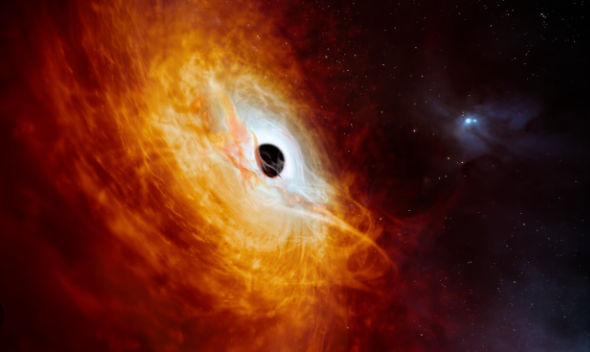Most Luminous Object Identified
Using the European Southern Observatory’s (ESO) Very Large Telescope (VLT), astronomers have recently identified a bright quasar. It is not only found to be the brightest of its kind, but also the most luminous object ever observed.
What are Quasars?
Quasars are the bright cores of distant galaxies and they are powered by supermassive black holes.
The black holes powering quasars collect matter from their surroundings in a process so energetic that it emits vast amounts of light. Quasars are some of the brightest objects in our sky, that some distant ones are even visible from Earth.
Discovery and Features
The black hole in this record-breaking quasar is growing in mass by the equivalent of one Sun per day, making it the fastest-growing black hole to date.
As a general rule, the most luminous quasars indicate the fastest-growing supermassive black holes. This black hole has a mass of 17 billion Suns. It is claimed to be the most luminous object in the known Universe, as per the astronomers from Australian National University (ANU).
The quasar, called J0529-4351, is so far away from Earth that its light took over 12 billion years to reach us. The matter being pulled in toward this black hole, in the form of a disc, emits so much energy that J0529-4351 is over 500 trillion times more luminous than the Sun.
Seven Light Years
All this light comes from a hot accretion disc that measures seven light-years in diameter, which must be the largest accretion disc in the Universe.
‘Seven light-years’ is about 15,000 times the distance from the Sun to the orbit of Neptune. This object showed up in images from the ESO Schmidt Southern Sky Survey dating back to 1980, but it was not recognised as a quasar until decades later.
Machine Learning in Analysis
As the resulting datasets are so large, researchers often use machine-learning models to analyse them and tell quasars apart from other celestial objects.
However, these models are trained on existing data, which limits the potential candidates to objects similar to those already known. If a new quasar is more luminous than any other previously observed, the programme might reject it and classify it instead as a star not too distant from Earth.
An automated analysis of data from the European Space Agency’s Gaia satellite passed over J0529-4351 for being too bright to be a quasar, and it suggested it to be a star.
Category: Science & Technology Current Affairs


